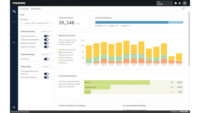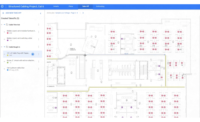In an effort to deliver on a long-requested feature, Procore Technologies and Sage announced a new data-sharing integration between their respective software platforms.
“Today we already have a rudimentary integration between Sage and Procore,” says Mike Milligan, director of marketing for Sage Construction & Real Estate. “Through this agreement we’ll be licensing advanced integration technology to allow the data to flow more easily, so we’ll have better management of things like change orders.”
The integration will allow for change-order data and other cost information to move more seamlessly between Sage 300 CRE and Procore’s platform, whereas earlier attempts to bridge the platforms often led to missing or incorrect data entry. The new integration is now entering a beta testing phase, and will eventually be added to the platforms at no additional cost. A future integration between Procore and Sage 100 Contractor was also announced but has not yet been implemented.
“The integration we have today revolves around the job-cost system, company budget, the commitment cost of subs,” explains Paul Lyandres, executive vice president for strategy and corporate development at Procore. “What is coming [with the new integration] is prime contracts, prime contract change orders, and rounding out the revenue and cost side of things. These are the biggest demands from our customers.”
Getting the integration between the Sage and Procore platforms has been a long requested feature according to Milligan, and he cites a recent advancement on Sage’s side that finally made it possible. “I don’t think there was a technical hurdle preventing this, but at Sage we made some improvements to our web APIs, and once that was completed it made this much easier,” he says. “We’re constantly doing work on 300 CRE product, and as we go through different applications in backoffice suite, we made some improvements to the web API interfaces. The new setup fits well with the Procore system.”
“It’s really about having faster access to the data, with the ability to map out the risks of impending change orders and costs,” says Lyandres. “This system will reduce double-entry and other errors, and you can get the cost data that reflects the change orders way faster. Getting that information in real time can fundamentally change the way you consider costs on a project.”



